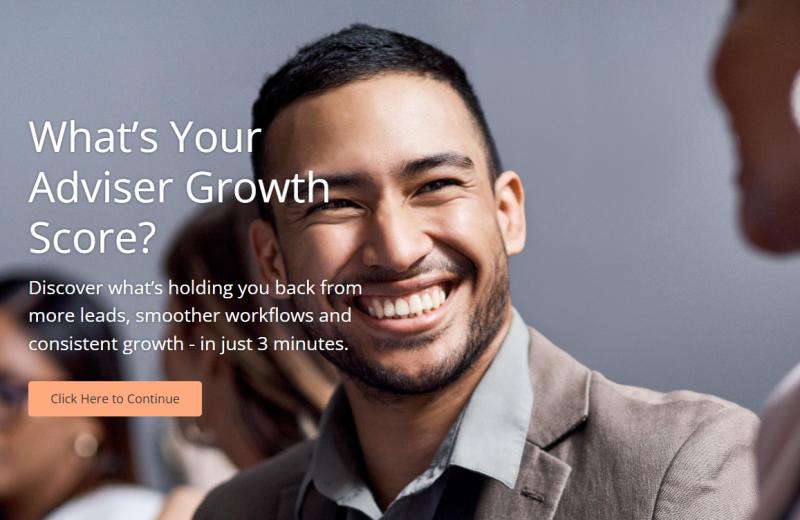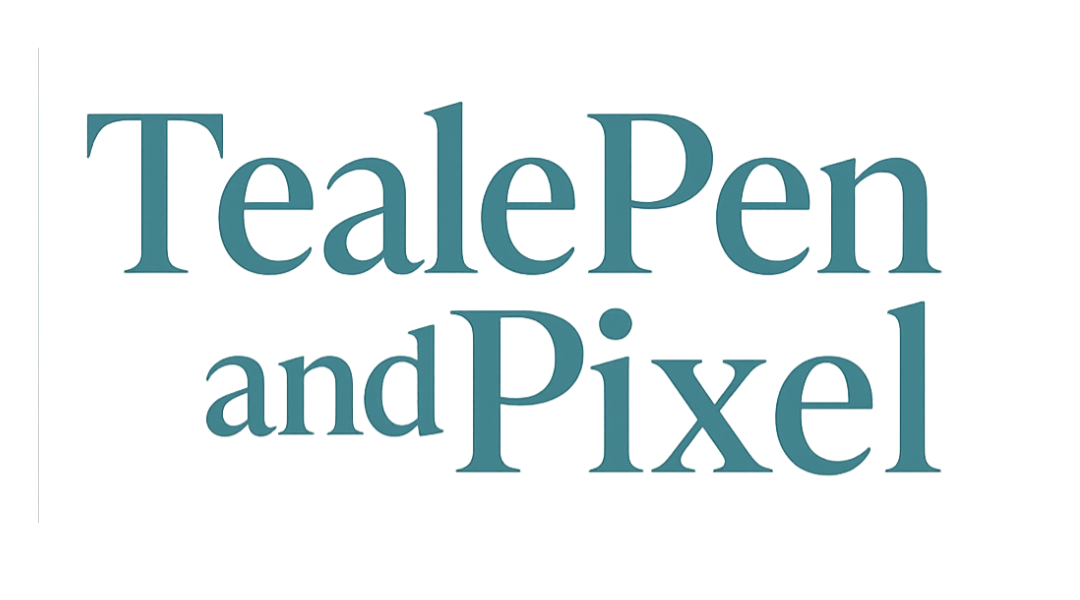Key Takeaways
Financial advisor lead generation can feel overwhelming. You want to get more inquiries and booked meetings, but which marketing channels do you choose?
How can you ensure quality?
Should you buy leads from third-party providers?
The reality is, lead generation looks different for each advisor. After all, your marketing goals, competition, ideal client persona (ICP), timescales and budget are unique.
What’s needed is a framework to help you decide on YOUR best options for financial advisor lead generation.
In this guide, I’ll share some of my best insights from 10 years of working as a lead generation strategist in the advisory space. Here’s what lies ahead:
- The traditional funnel model doesn’t work for most advisors. This focuses on the 3% of prospects who are “ready to buy” now, and ignores the 97% who need time, trust and nurturing.
- Lead generation must fit your unique goals and market. There’s no one-size-fits-all. Advisors need a custom strategy based on their audience, resources and offer.
- Enter the Lead Ecosystem model. Instead of chasing instant conversions, build a nurturing journey that attracts, engages and builds trust over time.
- Use valuable content to engage early-stage prospects. Offers like free scorecards, webinars and downloadable resources can draw in leads before they’re ready to buy.
- Build trust through repeated, multi-platform interactions. The “7-11-4 Rule” (7 hours, 11 touchpoints, 4 platforms) helps prospects feel familiar and ready to act.
- Measure what matters. Track ROI, cost-per-lead and conversions to refine what works. Use A/B tests and feedback loops to improve consistently.
- Blend digital scale with personal connection. The best results come when you combine automation with authentic human engagement.
- Make lead generation a living system. Stay agile, test new tactics and commit to a repeatable process. Success comes from evolution, not perfection.
Ready to move beyond “random acts of marketing”?
Dive into the full article for step-by-step tactics and real-world examples that turn these ideas into your next growth breakthrough.
The “Funnel Strategy Problem”
An Agency Story
Before starting my own business as a financial advisor marketer, I worked for agencies. There, I discovered a problem with financial advisor lead generation.
The thinking seemed to go like this:
- Get a financial advisor signed up to a Google Ads retainer (e.g. pay a monthly fee for us to set up and manage their Google Ads account).
- Drive traffic to a landing page we’d built. For instance, we might set up an ad, which promoted: “Pension Planner Oxford”, and direct the user to a page on that topic.
- Include a contact form on the page, and hope the user would fill it out. Also, we’d hope that the user was the advisor’s ICP (ideal client persona).
- Repeat and pray.
The point of failure
Many agencies push this funnel approach in good faith.
After all, it works very well in sectors like e-commerce. The process is quite simple:
You see an ad (e.g. for a book) after making a search in Google, click through and quickly buy it after going through a seamless checkout process.
I call this the “Funnel Strategy” to lead generation, and it looks great on paper. But there’s an issue.
I never saw it truly work for financial advisors.
Sure, occasionally we’d get a lead. Yet, the typical result was lots of clicks, a bit of hovering on the landing page by the user, and then they’d leave.
The only result? Google got money from the advisor for ad spend. They’d have little to show for it.
I learned that a different approach was needed if advisors were to generate leads online. As I started my own business, I put some new ideas into action, and things changed.
I began applying another approach to financial advisor lead generation that I’d been conceiving for a while, called the “Lead Ecosystem”.
I was nervous, because it looked slower, on paper. At first glance, it also looked more complicated than the simple funnel approach I’d been told for years to implement.
However, I discovered that it wasn’t all that cumbersome and difficult.
And it also worked.
The Marketing Triangle
Reshaping the Funnel
Before I show you how this works, let me explain via an illustration:
Think of this Marketing Triangle as a typical “funnel” for financial advisors. There are people at the top who you want to become clients, but they’re not even aware of you (yet).
Further down the triangle, people become steadily more aware and interested in how you could help with their pensions, investments and so forth.
However, only about 3% are at the stage of “Ready to Buy”, right now.
That means, for every 100 ICPs you message on LinkedIn this month, the theory states perhaps only 3 might be ready to book a free consultation.
The reality? It may only be 1, since there will be other advisors competing with you in their inboxes.
A Different Approach
This is why the Funnel Strategy, so often, doesn’t work in financial advisor lead generation.
You’re putting all of your effort (and budget) into that 3%, where the numbers are smallest and the fighting is fiercest amongst other advisors.
Yet, what if you could capture some of that other 97% further up the Marketing Triangle?
After all, these are financial advisor leads in the making. They just need to be brought into your orbit, nudged along the customer journey as their relationship and trust with you builds.
Enter the Lead Ecosystem.
The Lead Ecosystem
Have you ever seen an irresistible offer that made you do some kind of “customer action”, even though you were not in the market to buy, right at that second?
Here’s a recent example I saw on LinkedIn:
The author was offering a collection of successful marketing materials, for free. All the audience had to do was comment “Swipe”, and he’d send them over via DM (direct message).
The ultimate goal, of course, would be for the author to eventually convince some of these people to buy from him, as they got deeper into his content ecosystem.
It’s a very clever form of lead generation, as it can capture and nurture people who would otherwise be missed by a simple “hard-sell” approach (targeted at the 3%).
The Advisor Growth Score
Here is another example of the Lead Ecosystem in action.
Below, I’ve offered an Advisor Growth Score which I promote to financial advisors (you can click it to view):

This invites them to take a 3-minute free “quiz”, where they can diagnose their lead generation efforts, find weak spots, and identify actionable steps to improve their strategy.
I’ve seen this “gamified quiz” (GQ) work really well, not only for myself – but also for financial advisors.
Here’s a snapshot of what happens:
- An ICP takes notice of the GQ (e.g. on LinkedIn), and fills it out.
- After they answer the 12 questions (e.g. on “How to become more financially free”), they are offered a tailored results page based on their answers.
- This provides real-time, personalised value. Immediately, you raise their perception of you as a thought leader and trusted professional.
- You offer to email them their results for a PDF breakdown, which they accept.
- From here, you can now start sending them email campaigns.
- In the weeks ahead, you send an email inviting them to your latest webinar (e.g. on pension planning). They attend, signing up to your private Facebook group in the process.
- After attending, you offer to send them a free copy of your book – which they accept.
And so on.
The Power of an Ecosystem
What is happening in this process, and why would you go to all that effort?
Firstly, you are embedding your ICP into your content ecosystem, providing more and more valuable “brand touchpoints” along the way.
They are getting to know you better, forming a deeper connection.
Secondly, you are hitting the 7-11-4 Rule in your financial advisor lead generation.
What on earth is that?
It means:
- 7 hours (the typical time needed for someone to consume your content – e.g. blogs, videos and podcasts – before they trust you).
- 11 touchpoints (the minimum number of interactions required with your brand).
- 4 locations/platforms (the different locations they should find you online and/or offline).
So, in the bulleted example I gave above, we had:
- 7 hours of contact – e.g. taking the score card, attending the webinar, reading your emails.
- 11 touchpoints – e.g. multiple emails and social media posts across many weeks.
- 4 locations – e.g. email, Facebook, webinar, book, etc.
In effect, this ecosystem strategy means you are not just going for the 3% in the funnel.
You are potentially getting financial advisor leads from the 40%, 50% or even more – by drawing them in, and nurturing them down the funnel…
…Until they BECOME the 3%.
Setting the Right Pace: Timelines, ROI and Growth
As I mentioned earlier, one hesitation I initially had with this approach is the timescales.
But, after 10 years as a financial marketer, I’ve realised that lead generation isn’t magic. It’s a marathon. You can’t win by stop-starting, trying to sprint all the time.
- Expect realistic timelines: Digital campaigns for advisors often deliver qualified leads in 2-4 months, while referrals can close in weeks.
- Measure what works: Top advisors track marketing ROI, conversion rates and cost-per-lead (CPL) – benchmarking strategies side-by-side.
- Iterate quickly, and learn faster: Adjusting based on data lets you double down where you see traction.
Use data to:
- Run A/B tests (tweaking headlines, send times or call-to-actions)
- Adjust campaigns dynamically based on feedback or drop-offs
- Benchmark results against industry data (the top advisors report qualified lead rates above 20% from targeted automation).
In every strategy, the best advisors focus on blending digital scale with personal connection.
The secret: combine technology with your uniquely human expertise to meet prospects where they are – online, in person or both.
If you remember one thing: The future belongs to financial advisors who view lead generation as an ongoing, evolving craft; one built on trust, fueled by intelligent tools and always reflective of real client needs.
Sustaining Growth: Creating a Repeatable Lead Generation Engine
Staying Ahead: Adapting to Trends and Client Preferences
The best advisors spot changes before everyone else. Think regulatory shifts, evolving client values or new digital habits.
- Dedicate time each month to review industry news and competitor moves
- Pilot a single experiment per quarter, whether it’s a Facebook Q&A series or a fresh retargeting campaign
- Measure and iterate: use client feedback and conversion data to refine your lead gen
The landscape never sits still, but neither should you.
“Treat lead generation as a living system. Listen, shift and reinvent as needed.”
Final Thoughts
When you connect the power of authentic relationships with smart, tech-driven strategies, lead generation stops feeling like a guessing game. It starts fueling real growth for your advisory practice.
You have at your fingertips a set of proven methods not only for attracting more prospects, but for connecting with the right clients – the ones who recognize your value and drive your business forward.
Here’s How You Can Turn Today’s Insights Into Tomorrow’s Results:
- Clarify your ideal client profile and tailor every message to speak directly to their needs
- Systematize your referral process. Make asking for introductions and testimonials part of your regular routine.
- Leverage automation and your CRM to take repetitive tasks off your plate. This help you with always moving warm leads closer to a meeting.
- Diversify your lead channels. Blend digital tactics with face-to-face trust-building for compounding impact
- Track and optimise your results continuously so you’re doubling down on what delivers (and letting go of what doesn’t)
Ready to Get Moving?
- Pick one high-impact tactic (like launching an educational lead magnet or revamping your referral ask) and schedule it for this week.
- Audit your current CRM and email strategies. Are you capturing data and following up automatically, or is it time for an upgrade?
- Set a calendar reminder to review and adjust your process every month. Consistency drives compounding success
Bold moves today mean a stronger, smarter pipeline tomorrow. The future belongs to advisors who blend technology with the trust that only human insight can build.
Every lead is a chance to create impact. So, why settle for ordinary? Lean into these strategies, and you’ll be the advisor clients remember, refer and rely on.
Get your Advisor Growth Score
Get your score for free, and in 3 minutes, by following the link on the image below:

Philip Teale is a MCIM marketer with over 10 years’ experience working with financial advisors – helping them gain new revenue and clients using online channels and AI-powered workflows.

